#Eostar
Photo


Eostar did you mean Kirito being stupidly over affectionate in public but everyone’s too afraid to say anything bc well. He’s the Star King,
#Listen. Yujikiri good. Yujikiri god tier.#But also. Eokiri. Eostar. I love them so much#It's essentially the same ship but Eolyne's 100% more done with Kirito's bs and Kirito is 100% more open with his affection#(Eo doesn't mind it tho not really)#SAO#Sword Art Online#Kirito#Eugeo#Eolyne#Eolyne Herlentz#Yujikiri#Eostar#Eokiri#I just wanted to draw so I could feel SOMETHING. You know#Shima arts#Art#Digital art#Doodles#Eolyne: Do you have to announce you love me to the public every time we hold a conference#Kirito: No but am I going to keep doing it anyway? Yes#shima-draws
310 notes
·
View notes
Text
I requested these to Latte artist and they made these for me if you interested you can follow them and you can request them in the DM's
Latte artist
https://twitter.com/tokoroten_1234?t=Ty1NidDKs0q6FmjYSqpSAA&s=09
Unital Ring Kirito
Unital Ring Eolyne





#sword art online#sao alicization#kirito#kirigaya kazuto#eolyne herlentz#eokiri#eostar#latte art#unital ring
8 notes
·
View notes
Text
The Week Ahead: March 18-24, 2024
Lunar Phases
Thursday, March 21, 03:27 UT - Gibbous Moon, 16°00’ Leo
The key phrases for the Gibbous lunar phase are “tweak and adjust plans as needed,” and “pour more effort and energy into our intentions.” We are bursting with creative ideas, and can be quite eloquent. Having fun is easy.
Monday, March 25, 07:00 UT - Full Moon/Eclipse, 5°07’ Libra
The key phrases for the Full lunar phase are “culminate, fulfill, illumine, manifest;” and “pour all our effort and energy into our intentions.” We can jettison any attachments to the past (although with an eclipse it’s more likely those attachments will be removed).
Void of Course Moon
Tuesday, March 19, 18:52 UT (Cancer) - 19:33 UT (Leo)
Friday, March 22, 06:34 UT (Leo) - 07:42 UT (Virgo)
Sunday, March 24, 15:49 (Virgo) - 20:37 (Libra)
Retrograde/Direct/Etc.
Pre-retrograde shadow: Mercury/Aries, Ceres/Capricorn, Pallas Athene/Sagittarius
Retrograde: Juno/Virgo
Post-retrograde shadow: Vesta/Gemini
Transiting Mercury hits its “greatest eastern elongation” on Sunday the 24th. We are turning away from old, used-up mental processes.
Ingresses
Wednesday, March 20 - transiting Sun enters Aries
Aka the Aries Equinox. Happy Eostar up here and Mabon down there! An interesting month of new possibilities lies ahead. We can refocus on and realign with what is really important, aiming at being better versions of ourselves.
Friday, March 22 - transiting Mars enters Pisces
How to go after what you want, by not going after it - how to attune oneself to the Vibes Of The Cosmos, therefore becoming more effective at going after what we want - and so forth.
Et Cetera
There is one Opportunity Period this week: Monday, March 18, 14:09 UT - Tuesday, March 19, 19:33 UT. “You have more than 24 hours to take advantage of this great waxing Moon OP! Your last chance before Mercury enters its Storm (March 28) and turns retrograde (April 1).”
We are still in the shadow of the eclipse, and in Mercury’s retrograde zone. Given what else is going on Up There, we’ll feel very impelled to ACT. Proceed, but with caution - have as many options as possible - and remember to have a sense of humor.
20 notes
·
View notes
Text
Definition
This is a basic outline of my personal guidelines for what constitutes a Wiccan path/system. Others’ definitions certainly vary, and these criteria do not necessarily apply to non-Wiccan Pagans/Witches/other Occultists. Most of the concepts addressed here will be investigated more in depth with future posts.
🕯🌒🌕🌘🕯
🔮 Section A: Belief. It is my assertion that belief, first and foremost, makes the Wiccan. What one does is important to discerning Tradition (or absence thereof), but is secondary to the broader collective of Wiccan religious paths.
Reverence of Goddess AND God, together and equally. Wiccan worship and practice focus on a God and a Goddess, seeing them as manifestations of masculine and feminine divinity (among other equal, opposite, and complimentary pairs of forces and concepts. They are but one type of symbolic division).
Belief that the Gods can be directly contacted, whether through channeling, meditation, or other means. Also, It’s important to realize that one doesn’t need an intermediary, but will sometimes need a teacher or guide for the contact to be safe and successful.
Having a reciprocal relationship with the Gods. We give to Them, so They may give to us.
Belief in the effectiveness of Magick. Having confidence that your rituals and spells will work as they should is just as important as performing those works.
🕯🌒🌕🌘🕯
🔮 Section B: Practice. While I put belief first in my own determinations, there are certain applications of those beliefs that I see as essential to practicing Wicca.
God forms/names are European in origin, exceptions to this being Egypt and the Middle East. This is because I see Wicca as the continuation/revival of Pre-Christian Native European Shamanism, and contact with Egypt and Arabia (Mesopotamia, Babylon, Sumer, etc.) is well-established throughout history, and there is much cross-cultural influence between these groups. Also, there are mythological themes these regions have in common, that are not as present in, say, Asia and other parts of Africa. Additionally, many other Indigenous cultures and beliefs around the world are closed systems.
Celebrating the Sabbats with an understanding of their symbolism and story. There are eight Sabbats, or holidays, in the Wiccan calendar, also sometimes referred to as the Wheel of the Year. The dates given below are those traditionally observed in the Northern Hemisphere.
Casting a Circle wherein the ritual will be held. The Circle denotes sacred space for sacred acts, and is consecrated to the Gods.
General ritual format includes calling the Quarters, invoking and contacting the Gods, a section for the ritual purpose (celebrate the Sabbat or Esbat, work Magick, etc.), Cakes and Wine (including a libation to the Gods), and then banishing the Quarters at closing.
The Wiccan Rede and the Threefold Law are given some measure of importance. These ethical codes should not only advise on Magickal acts, but on the mundane actions of a Wiccan as well.
Sabbats:
🎃 Samhain – Oct. 31
🎄 Yule – on or about Dec. 21
🕯 Imbolc – Feb. 2
🥚 Eostar – on or about Mar. 21
❤ Beltane – May 1
☀️ Midsummer – on or about Jun. 21
🌾 Lammas – Aug. 1
🍁 Fall Equinox – on or about Sep. 21
🕯🌒🌕🌘🕯
🔮 Section C: Characteristics. These are descriptors, qualities that I feel are essential to the full knowledge and experience of Wicca.
Wicca is a fertility religion. Wiccans rejoice in and celebrate fertility in all its forms, sexual and otherwise (new growth, ideas, ventures, etc.).
Wicca is a nature religion. All of nature is seen as sacred and integral and interrelated. Humans are a part of nature, as are the Gods and the processes of Magick.
Wicca is an agricultural system. The Sabbats are aligned to the planting and harvest seasons, symbolically if not literally.
Wicca is a cyclical system. All the cycles of nature and the world are revered, including those of the Sun, Moon, Earth, planets/stars, seasons, and the life of all creatures, human and otherwise.
Wicca is a religion of balance. Just as life is a fact of existence, so is death. Just as Summer comes each year, so does Winter. Day and night, light and dark, each coin has a flip side, and all sides are important to Wiccan belief and practice.
Wicca is non-dualistic. Since each pairing listed above comes together to make something greater than the sum of its parts, the true nature of the reverence is for the whole, not simply the pieces. Wicca doesn’t view things as “either/or,” but “both/and.”
Wicca is a shamanic religion. A shaman is one who forms a personal relationship with the Gods and Spirits for the betterment of their tribe/family/people/etc., and has the ability to then travel the astral and communicate with the Gods and Spirits through various means, and also to provide healing. These goals are shared by Wicca, the skills to communicate, travel, and heal greatly encouraged and fostered by its teachings. Also integral to a shamanic system is the death-and-rebirth cycle, as shamanic initiations in tribal societies (which usually occur on the astral and are performed by Gods or Spirits) are said to involve being killed (often violently) and then reborn into a new knowledge and understanding. This symbolism is used in some Traditional Initiation ceremonies, but can be seen in all of Wicca in the God’s story as He traverses the Wheel of the Year.
Wicca is a priesthood. There are no lay people; even in ritual, it is important that everyone participate by lending their energy and intent to the rite at hand, even if the Priest/ess is the only one performing a physical action. Every Wiccan has the capacity to be a Priest/ess, and needs no intermediary between them and the Gods.
Wicca is an experiential religion. A lot of the theory and how-to and basic knowledge can be learned from books/websites, but to truly understand the fullness of the religion, one must actually practice it. There are also some aspects that simply cannot be learned or understood without actually going through them.
Wicca is a mystery religion. Those aspects that must be experienced are what I call the Greater Mysteries. The ways to achieve those Divine experiences are called the Lesser Mysteries. The Greater Mysteries are for all willing to seek them, the Lesser Mysteries are only Mysteries until one learns to properly perform and make use of them. In the case of Initiatory Oathbound Traditions, they are Mysteries to the uninitiated. In other words, the knowledge and experience you gain are Greater Mysteries, and the rituals and other acts that lead you to them are the Lesser Mysteries.
Next post: Categories
9 notes
·
View notes
Text
Ostara,.Eostre, Eastre oppure Eostar; è uno degli ottosabba pagani. È una festa originariamente in onore della dea Germanica della fertilità: eostre. È una festività che è collegata alla vita e alla sua rinascita e la sua celebre cade al primo plenilunio successivo all'equinozio di primavera. E il Coniglietto pasquale simboleggia la vita.

0 notes
Photo
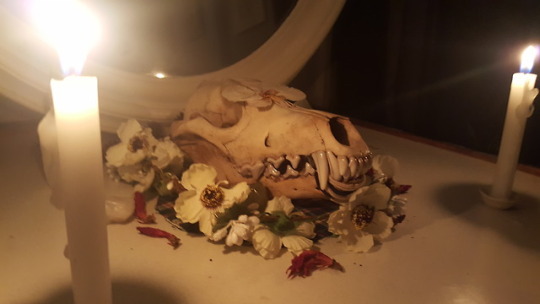

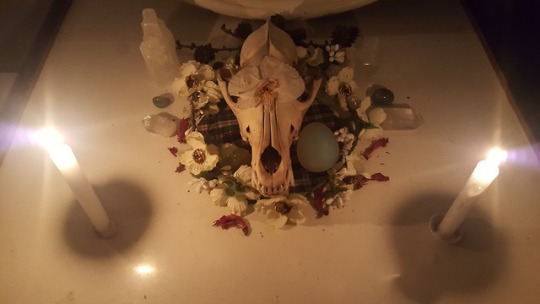
"May the new sprout from the old"
19 notes
·
View notes
Photo
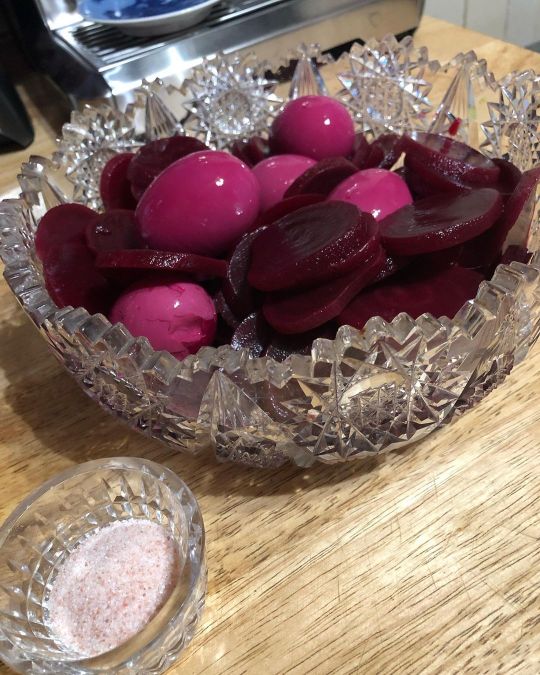
Happy Easter to all...Pickled beets and eggs in my mother lead crystal bowl and Himalayan salt in her sat cellar. Every year this is the one tradition I don’t miss. What is your favorite Easter or Passover tradition...you know? The one that if you didn’t do it you’d be up all night until you made it happen? #easter #pickledbeets #pickledbeetsandeggs #happyeaster #spring #eostar #crystal #crystalbowls (at The Herban Inn) https://www.instagram.com/p/CNP62Vxp4i8/?igshid=1woa4v38ja1gn
0 notes
Text
Work Smarter, Not Harder: How to Optimize Your Distribution
As technology continuously advances, there are numerous avenues in which you can optimize your warehouse distribution systems. While business growth provides increased opportunities, it will also present increasing complexity in warehouse distribution logistics. Warehouse management software is meant to simplify managing inventory while reducing the time needed to understand data and metrics.
Let’s take a look at the different opportunities that are available to you for increasing workplace productivity.
eoWarehouse
eoWarehouse is a warehouse management software suite that provides up-to-date data and metrics. Data is perhaps one of the most important elements to consider when searching for new ways to optimize your operation. With detailed data and an understandable dashboard from which you can review the information, you can find more opportunities to boost workplace productivity.
eoWarehouse will also help you optimize your space management, inventory cycle, inventory accuracy, and more.
If you use eoWarehouse, it is wise to have a reliable IT team available to assist you. When it comes to upgrading or switching to a new software system, reliable support is vital to minimize any downtime you may encounter as you learn a new system.
Inventory Review Process
Another way you can optimize work productivity is to create an inventory review process. Within this process, you will need to include an audit of your inventory as well. Allowing materials or products to remain stagnant will erode your profit margins and gradually increase your costs. Performing inventory review processes allows your warehouse to maintain proper levels of inventory.
An inventory review process can help you identify inventory turnover rates, too. Understanding these inventory insights will help you price items to improve profits and improve your supply chain efficiency.
An inventory review process integrated into warehouse management software should also be easy to use. If an employee or manager spends too much time trying to understand data, that will cut into your profit margins. Be on the lookout for easily understood menus, clearly labeled buttons, and easy-to-access inventory levels when shopping for new software.
Empty Space
Empty space can eat into your profit margins if it is not being properly utilized. There are many ways you can turn empty space into something that benefits your warehouse. For example, you can change your racking and palleting system to increase efficiency and fit more inventory into a space. Increasing usage of vertical space is an effective way to improve your storage capacity.
Other suggestions include reorganizing your product categories in terms of efficiency related to velocity of movement. You may also reorganize your inventory based on growth potential.
Using warehouse management software and professional services can provide you with feedback and analysis on how to most effectively optimize your inventory and space. The available data analytics and metrics can show you trends over time which will provide an insight on where your systems can be improved. These trends can also help in more accurately predicting future results, thus helping you gear your management system to better accommodate the future of your business.
0 notes
Photo

On Earth, as it is in #TwinPeaks. #HappyEaster, #Eostar, #springequinox, etc. Etc. ************************* #spring #holiday #eastersunday #chocolatebunnies #candy #fertility #TV #DaleCooper #DavidLynch #fnord
#eostar#eastersunday#twinpeaks#dalecooper#happyeaster#chocolatebunnies#candy#fertility#spring#tv#holiday#davidlynch#fnord#springequinox
1 note
·
View note
Photo

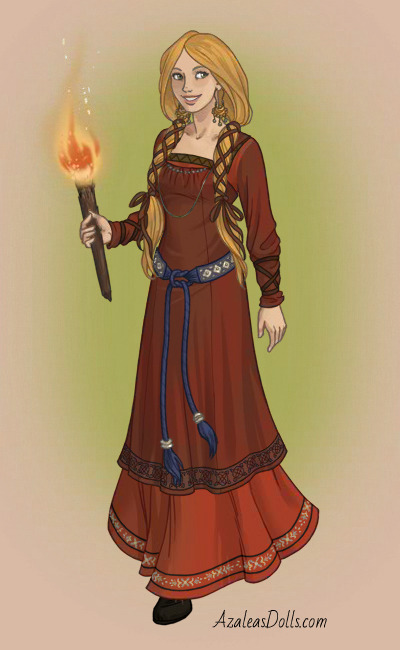
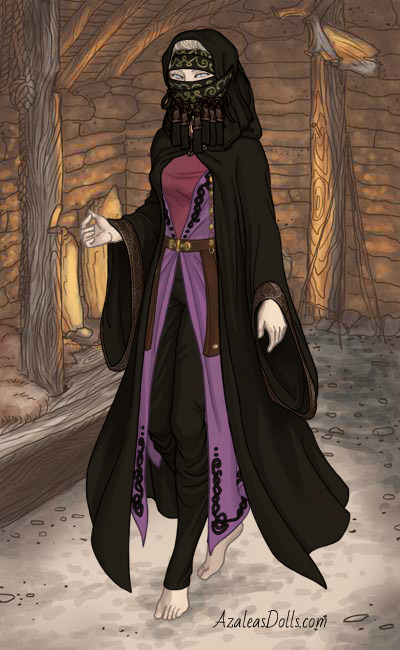







I was bored and made some of the Norse goddesses. From top to bottom its, Freya, Sif, Noirun, Skadi, Frigga, Eostar, Eir, Hel, Ran and Sol. These are just how I see them and was just for fun.
#Freya#sif#noirun#skadi#frigga#eostar#eir#hel#ran#sol#asatru#heathen#aesir#i made idunn and nott too but my computer ate it sorrrry#goddesses
423 notes
·
View notes
Text
2023 Libra Equinox
Saturday, September 23, 06:50 UT
Chart erected for Washington, DC

Happy Mabon above the equator, and Happy Eostar below!
The Sun is very weirdly detached from everything - as far as major aspects go, there’s only a conjunction to the Lady Asteroid Pallas Athene, and a square to the Lady Asteroid Vesta in Cancer. Spending too much time in our own heads, and not enough in reality? We’ve some uncertainty about our basic identity and may be over-inflating our egos and self-importance to compensate.
The Moon, however, is firmly in the thick of things. There are some challenges (caused mainly when we’re being bossy and manipulative) but also some opportunities and blessings, if we put the work in. There is a strong impetus to do something, despite that solar detachment and self-doubt - which is what motivates us to act; let’s hope we want genuine growth and not just the appearance of it.
-=-=-+++++-=-=-
I first think of food, whenever I consider a Sabbat - and for Mabon what I think of are apples. Apple cider, homemade applesauce, caramel apples, my late mom’s deep-dish apple pie, apples and honey, apples and peanut butter, bobbing for apples. I eschew pumpkin until Samhain - right now it’s apple time!
I grew up in the country, and we never bothered raking leaves - my grand aunts in the city, though, always made a production number out of getting them raked. Back in the 1960s, there wasn’t any organized “leaf collection.” The grand aunts had a magnificent vegetable garden and were dedicated composters. What they couldn’t fit into the compost bin, they burned - right on the street, in the gutter. Adult me thinks “Yikes;” child me always resented being forced to watch from a distance instead of being right in the thick of it.
We had our county fair during the last week of September, so “fair week” is also associated with autumn for me. Where do you think I got the caramel apples? Not to mention the best caramel corn in the world, “elephant ears” (essentially a giant cinnamon roll), corn dogs….
There is no autumn color quite like what you see in a midwestern US hardwood forest. I miss it terribly.
17 notes
·
View notes
Photo
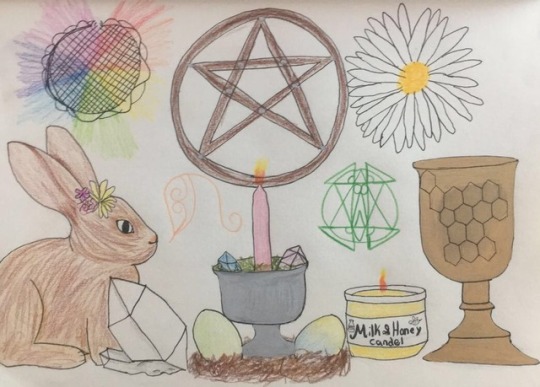
I can't fully celebrate Ostara/Eostar because I am at my fathers but here's an Altar drawing for the holiday!
5 notes
·
View notes
Text

Somewhere in Gaul near Toulouse - Archéo village gaulois
Satios the sowing of seeds
also known as Alban Eilir, Ostra
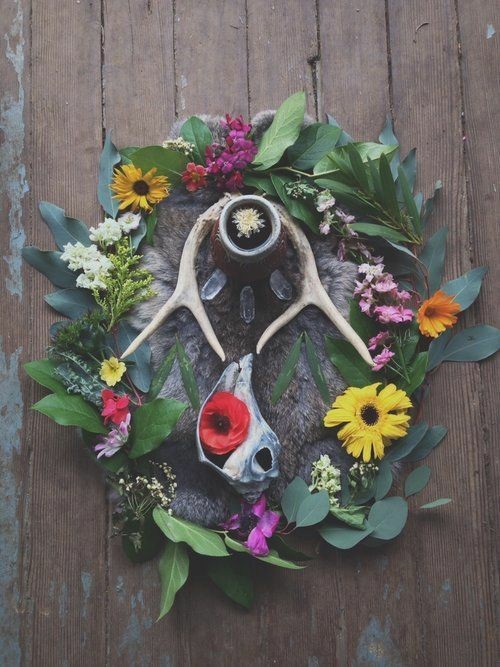
Altar - spring equinox - hoodwitch.com
The spring equinox is also called Alban Eilir, Eostar, Eostre, the Feast of Trees, the Feast of the Lady, NawRuz, No Ruz, Ostara, Ostra and Rites of Spring. Traditions from this period have often been associated with Easter with Christianization.
The flame of Brigantia grows in strength. At the Spring Equinox day is equal to night.
In some regions, households perform a closing ritual: the servant ritually returns to her mistress the candle that has lit up their evenings, and a wooden candle is placed on the table in its place, to remind us that a light no longer needed during supper. From then on, the household goes to bed at nightfall and gets up at dawn.
Longer days and warmer weather mean that the time for spring plowing and sowing has come. The whole community gathers in one of its fields for the ritual of the first blow of the spade, accompanied by prayers. Plowing can then begin immediately after Satios.

The plowman drives his horses clockwise, to invoke the blessing of the sun on his work. When he hitches or unhitches his beasts of burden, he causes their heads to face south. The sower begins his task with the solemn words: “In the name of the gods!”, and he first gives his horses a handful of grain and throws a clod of earth on their backs.
Ashes from the hearth, or better still, ashes from the summer solstice bonfire, are mixed with the grains to gain the protection and favor of the sacred fire.

Wood primroses
In Brittany, young girls go pick primroses as soon as they appear; they make big balls of it that they throw while singing “Heol die! Heol bihan! “ (Big Sun, Small Sun)
Men rediscover the practice of solar sports: theca, sow, soule… The archers resume their competitions and their training.
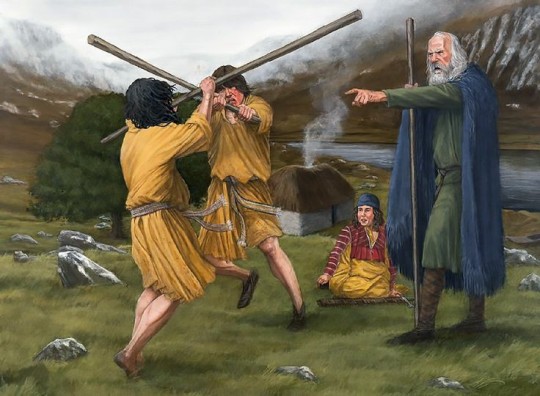
Pic found on militar.org.ua

Shamrocks - photographer unknow
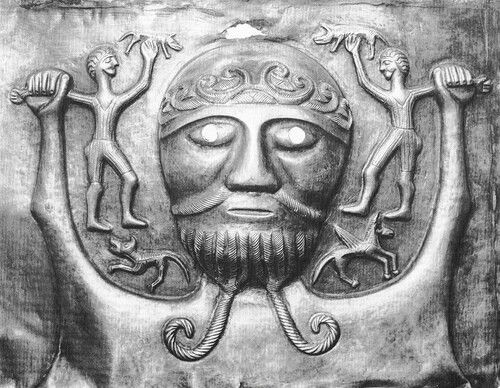
Teutates - Gundestrup Cauldron
Satios, which is called Alban Eilir in Welsh Celtic, is a celebration of the three classes and the cycle of Teutates, this celebration represents the “physical, agricultural, astral, cosmic, spiritual sowing”. Seed is sown there and clover is planted there as a sign of fertility. This sacrifice restores its vegetative force to the earth.

“Masha's themes are victory, success, protection, fertility and fire. His symbols are the red objects, the acorn and the raven. Masha means "mighty". Masha used her power to clear land for wheat, giving her associations with fertility. She also used her might to protect the lands of the Celts from invaders, becoming a war goddess and guardian. The art shows her dressed in red (a color heinous to evil) and with fiery red hair, forever driving away any malevolence that threatens her children's success.
There are other traditions inherent to this festival:
It is during this ceremony that the chariot of Magosia “the Plain”, “the Other World” (called Macha in Irish) is symbolically paraded. She is the wife of Crundicūns, “the Domed Summit” (Crundchu in Irish), himself the son of Agnomanos “the Charioteer”. Magosia, finally, is the mother of the divine Twins, boy and girl, the Iemni Magosias of the ancient Celtic, the Emain Macha of the Irish. She places this celebration more specifically under the aegis of the third function: she is beautiful, the wife of a rich peasant and already provided with children, she increases her wealth, she is an accomplished farmer and mistress of a model house. She runs faster than the fastest horses of the king; fertile, she dies giving birth to a boy and a girl while racing horses. She is the symbol of cosmic motherhood.
Also at this time, we make sacrifices of wealth by immersion; and in particular, if one is by the sea or in a boat, one offers Lero, god of the sea, a plate of herring, in homage to the man of the sea, the friend of sailors, the old king. Inland, on the banks of a river or a lake, a few freshwater fish are offered to the tutelary god of the rivers.
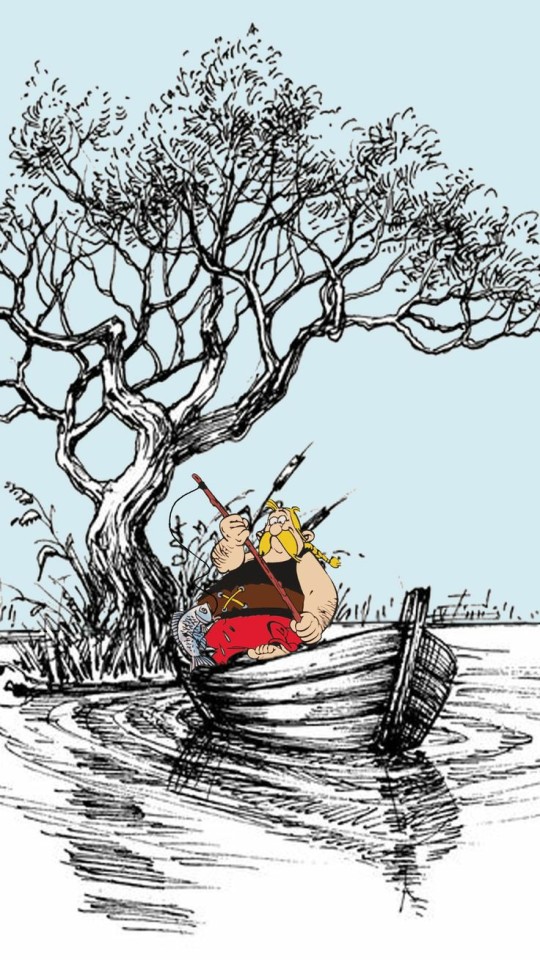
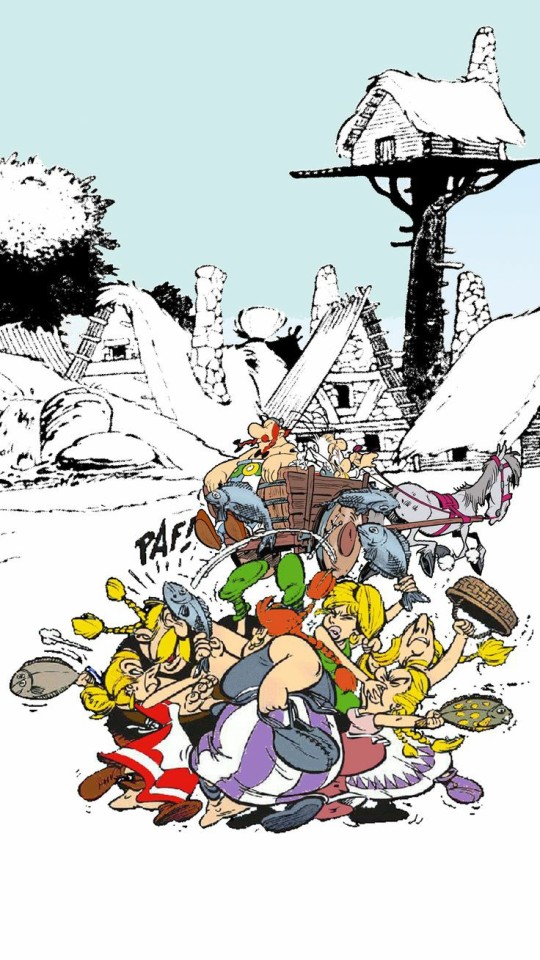
Asterix and Obelix - Herbert Geusgen Art - the sacrificial fish of discord, surely not fresh!
Finally, the passage from one season to another is celebrated by war festivals, the young men put on animal skins – sheep, deer – and straddle the horse-skirts, and dance; they are offered oats, apples, chestnuts. It is a rite linked to a magical practice and intended to promote the prosperity of harvests; it indicates at the time of carnival the agrarian character of the festival. The prancing of the horse has the same value as the cavalcades of Mediosamonios.
Finally, we find It was in this season that the myth of the rabbit of the Anglo-Saxon goddess Eostre (or Ostara) flourished, symbol of the fertility of nature.
OTHAS Druids
#satios#ostra#ostara#spring equinox#druidism#paganism#pagan wicca#gallic#celtic traditions#druidry#druidy#druids otha#macha#teutates
18 notes
·
View notes
Text
Sabbats & Esbats

Yule, Winter Solstice: December 20, 21, 22, or 23
Yule is the longest night and the shortest day of the year. Some Wiccans consider Yule to be either the year’s beginning or the end. This is the time to celebrate the return of the light. Yule is the solar turning of the tides, and the newborn Sun offers a fresh start and, literally, a new day. It’s a time of renewal and hope.
Brigid, Imbolc, Candlemas, Imbolg, or Brigid’s Day: February 1 or 2
Brigid, or Imbolc, is a preparation for spring. At Brigid, Wiccans clean and organize their living environments, as well as their minds and hearts, in preparation for the upcoming season of growth. It’s a time to shake off the doldrums of late winter and light the fires of creativity and inspiration.
Eostar, Spring Equinox, Ostara, or Oestarra: March 20, 21, 22, or 23
Winter is now over. Light is increasing. The day and night are equal in length at the equinox. Spring has arrived or is coming soon. Eostar is the time of fertility, birth, and renewal. The ice is thawing, and the growing season for plants and animals begins. Growth is the theme of the day.
Beltane, May Eve, Beltaine, Bealtaine, or May Day: April 30 or May 1
Beltane is the time of the marriage and union of the Goddess as Mother Earth and the God of the Greenwood. It is an ancient fertility festival marking the beginning of the planting cycle. The festival was to ensure a good growing season and a bountiful harvest. Beltane is light-hearted and joyful.
Litha, Summer Solstice, or Midsummer: June 20, 21, 22, or 23
Litha is the longest day and the shortest night of the year. Light triumphs, but will now begin to fade into darkness as autumn approaches. The crops are planted and growing. The woods and forests have reached their peak fullness. This is the time of abundance for wildlife, including people! The holiday is joyous.
Lughnasad, Lughnasadh, or Lammas: August 1
For the ancient Pagans, Lughnasad was a time of both hope and fear. They held hope for a bountiful harvest and abundant food, but they feared that the harvest wouldn’t be large enough and that the cold months would be filled with struggle and deprivation. At Lughnasad, modern Wiccans also face their fears, concentrate on developing their own abilities, and take steps to protect themselves and their homes.
Mabon, Fall Equinox, or Harvest Home: September 20, 21, 22, or 23
At Mabon, the day and the night are equal in length, in sublime balance. For many locations, Mabon coincides with the final harvest of grain, fruits, and vegetables. Mabon, also called Harvest Home, is the time of thanksgiving. The beauty and bounty of summer gives way to the desolation of winter, and the darkness overtakes the light.
Samhain, All Hallow’s Eve, Hallowmas: October 31 or November 1
For many Wiccans, Samhain marks the New Year and is the most important Sabbat. It’s the time to remember the ancestors, and the time to celebrate the harvest and all that has been accomplished over the year.
Esbats
The Esbats, or Wiccan lunar holy days, celebrate the moon’s passage around the Earth. The Esbats offer Wiccans a chance to regularly put aside time to step away from the ordinary world and dedicate time to spiritual reflection or magical work. The approach to the holy days isn’t all-inclusive. For each phase of the moon, some groups have particular rituals, and the Esbats can be celebrated by individuals or covens.
Some Wiccans celebrate an Esbat on the:
Full Moon
New Moon
Full Moon and New Moon
Full Moon, New Moon, and the Quarter Moons
Some Wiccans use the word Esbat to describe any Wiccan gathering (especially if ritual or magical work takes place) that doesn’t occur on a Sabbat.
3 notes
·
View notes
Note
Hey there :D been a while, I think 🤔😂
Are there any good books you recommend for someone learning about the 8 sabbats? :D
Oooh ok. I personally haven't read that many books that are specific to the sabbats as when I started there wasn't actually that many out ( I started over 25 years ago when I was tiny). But one I absolutely love is by Kate West. It has a little ritual thing, information or an observation about every day of the year so you can work your way through and so something every day.

Kate West is great for simplifying things and has many books out like The real witches craft and kitchen witchcraft etc.
I also love anything by Scott Cunningham, he gives you a good base for everything.
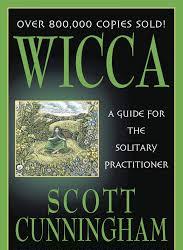
And another good author to read if you're just starting out is Silver Ravenwolf.
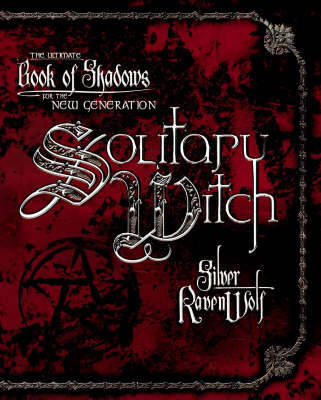
I have a whole bookcase devoted to pagan books, but most of them are general, all purpose books with a bit of everything in them.
Because honestly, as with anything in paganism, I'd recommend that you make up your own way of observing the sabbats.
Googling the sabbat names and then something along the lines of "The story of Eostar" or "The story of Yule" etc.
Also, and this is gonna sound weird, but I've found that reading things in story form is something that helps a lot. Stories are how we learn from the moment we are born, and simplifying it to children's stories is something I've always found beneficial.
7 notes
·
View notes
Text

O tempo da celebração da Páscoa, a partir de um olhar Celta:
"A Deusa Eostre...
A Deusa Eostre é a Deusa honrada em Ostara.
Eostre era a Grande Deusa Mãe saxônica da Alvorada, da Luz Crescente da Primavera e do Renascimento da Vegetação.
Era conhecida pelos nomes: Ostare, Ostara, Ostern, Eostra, Eostur, Austron e Aysos.
A Deusa Eostre pode relacionar-se com a Deusa Eros, grega, e a Deusa Aurora, romana, ambas Deusas do Amanhecer, e com Ishtar e Astarte da Babilônia, ambas deusas do amor.
Segundo a Lenda, Eostre encontrou um pássaro ferido na neve.
Para ajudá-lo, transformou-o numa lebre mas a transformação não ocorreu por completo e o animal permaneceu com a habilidade de colocar ovos.
Como agradecimento por ter salvo a sua vida, a lebre decorou os ovos e levou-os como presente para a Deusa Eostre.
A Deusa maravilhou-se com a criatividade do presente e, quis então, partilhar a sua alegria com todas as crianças do mundo.
Criou-se assim, a tradição de se ofertar ovos decorados na Páscoa, costume que ainda hoje em dia se tem.
Os ovos são símbolos de fertilidade e vida.
Uma tradição antiga dizia que se deveria pintar os ovos com símbolos equivalentes aos nossos desejos.
Mas, um dos ovos deveria ser sempre enterrado, como presente para a Mãe Terra.
A Lebre da Páscoa era o animal sagrado da deusa teutónica da Primavera, Eostre, a Deusa Lunar que dava fertilidade à terra e tinha cabeça de Lebre.
A palavra inglesa para Páscoa,*Easter, provém do nome da deusa Eostre, também designada Ostara ou Eostar.
O dia do culto de Eostre, a Páscoa (Easter), que ainda é praticado pelos seguidores da tradição celta, é no primeiro domingo depois da primeira lua cheia, após o Equinócio da Primavera, ocorrendo entre os dias 19 e 22 de Março." -
Texto com leve adaptação extraído do grupo Wica Gardneriana - As raízes da magia antiga.
9 notes
·
View notes